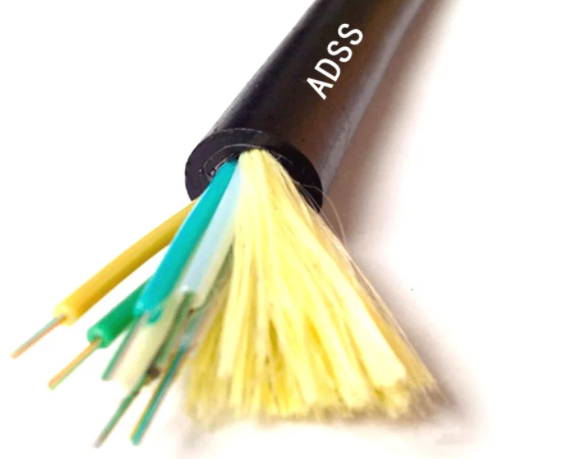Oufu Optical Fiber Cable Co.,Ltd
Address: Shenyang, Liaoning, China
Contact person: Manager Zhang
Phone: 400-964-1314
Mobile phone: +86 13904053308
【whatsapp && wechat】
2024-05-23 1278
Unlocking the Technical Details of ADSS Cable: Comprehensive Analysis of Tensile Strength and Attenuation Properties
ADSS (All-Dielectric Self-Supporting) cables, owing to their unique structural design and material selection, have found widespread application in power communication, Fiber to the Home (FTTH), and other domains. Below is a comprehensive analysis of the tensile strength and attenuation properties of ADSS cables.

I. Tensile Strength
The tensile strength of ADSS cables stems primarily from their distinctive structural design and material composition. The optical fiber core within the cable, constructed from high-strength materials, possesses the ability to withstand significant pulling forces. Furthermore, the protective sheath and insulation layers surrounding the cable are also made of high-strength materials, enhancing the overall tensile capacity of the cable.www.adsscable.cn
During the design and manufacturing process, ADSS cables undergo rigorous tensile testing to ensure their ability to withstand various complex tensile and compressive forces in real-world applications. Additionally, the self-supporting nature of ADSS cables allows for greater flexibility and convenience during installation and maintenance, reducing the need for additional support structures and costs.
II. Attenuation Properties
Attenuation refers to the energy loss of optical signals during transmission due to various factors. For ADSS cables, their attenuation properties are primarily determined by the materials used in the optical fiber core and the manufacturing process.
Firstly, the choice of materials for the optical fiber core plays a crucial role in affecting the attenuation properties. Quality optical fiber core materials can minimize the scattering and absorption of optical signals during transmission, thereby reducing attenuation. Therefore, ADSS cables typically employ low-attenuation optical fiber core materials to ensure efficient transmission of optical signals.
www.adsscable.cn
Secondly, the manufacturing process also has an impact on the attenuation properties. Strict control over parameters such as the diameter and refractive index of the optical fiber core is necessary to ensure stable performance during optical signal transmission. Moreover, the twisting and packaging processes of the cable can also influence its attenuation properties, requiring the adoption of advanced technologies and equipment to ensure the quality of the manufacturing process.
In practical applications, the attenuation properties of ADSS cables can be evaluated through testing. By measuring the attenuation of optical signals under different lengths and conditions, the performance and reliability of the cables can be assessed. Furthermore, the test results can be used to optimize the design of the cables, improving their transmission performance and stability.
In conclusion, the tensile strength and attenuation properties of ADSS cables are two crucial technical details that require attention in their application. Through optimizing the structural design, material selection, and manufacturing process, ADSS cables can achieve excellent performance, providing reliable optical transmission solutions for power communication, FTTH, and other fields.www.adsscable.cn